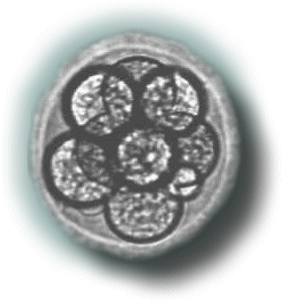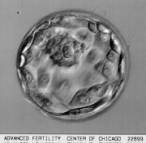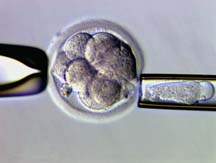
What are stem cells, and why are scientists so interested in them?
"A stem cell is a cell that has the ability to divide (self replicate)
for indefinite periods…Under the right conditions, or given the right
signals, stem cells can give rise (differentiate) to the many different
cell types that make up the organism.
In the adult organism ("adult" referring to humans or animals at any point after birth) stem cells are found in the bone marrow, blood stream, brain, spinal cord, dental pulp, skeletal muscle, skin, gastrointestinal tract, cornea, retina, liver and pancreas. Another rich source of stem cells is the blood within the umbilical cords and placentas no longer needed by newborn babies. New research shows human fat contains stem cells.
The stem cells receiving the most public attention are found within the human embryos. Researchers harvest these cells by pulling the "inner cell mass," the 30-34 cells that will develop into the baby's tissues and organs, from the center of a five-day-old embryo.
What is the problem with stem cell research?
Adult stem cell research is not controversial; no human being dies when
these cells are collected. The moral problem arises because stem cell
harvesting from embryos would destroy them.
Is the enthusiasm for embryonic stem cell research justified?
Human embryonic stem cells (ESCs) have not yet successfully treated any
disease.
Currently, the National Institutes of Health says that "any therapies
based on the use of human ES cells are still hypothetical and highly experimental."
Scientists are still figuring out how to induce the cells to change into
particular types of cells. Other problems the researchers have encountered
include: the tendency of ESCs to form tumors when they are transplanted
in to a patient, unstable expression of traits contained in the cells'
genes, immune rejection, and the risk of passing animal viruses to humans
because formulas of animal cells are used to keep ESC lines growing.
What is the current state of research on adult stem cells?
Doctors already use adult stem cells to treat a host of human diseases,
including cancers, autoimmune diseases, stroke, cartilage and bone damage,
and blood and liver diseases. Scientists are continually discovering new
capabilities of adult stem cells. For example, using mice and rats, scientists
have regrown nerve cells, reversed diabetes, and repaired hearts damaged
by heart attack. There is also evidence of a universal adult stem cell
that can change into any cell of the body.
Despite the reported "promise" of embryonic stem cells, stem
cells from adults {after birth} are the ones that have been delivering
true therapy. Dr. Donald Orlic of the National Human Genome Research Institute
states, "We are currently finding that these adult stem cells can
function as well, perhaps even better than, embryonic stem cells."


